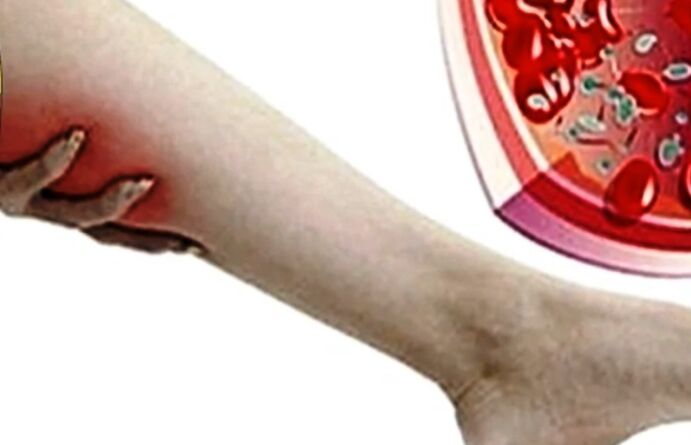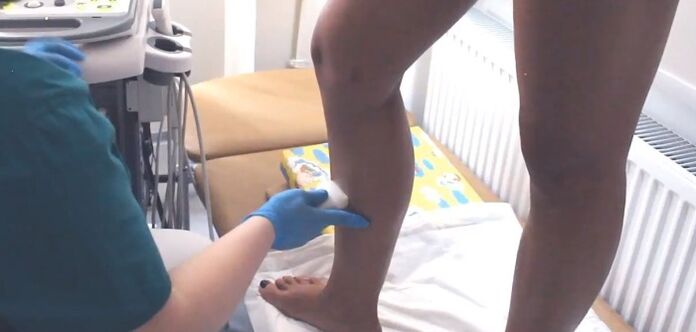The pathological process that affects the vascular system is a serious danger of the body.This applies to any disease of this type, regardless of their scale and localization.In particular, this applies to varicose veins, which in most cases affect the foot vessels.
In the modern world, varicose veins are one of the topical problems, many people are subject to its development.Pathology is not just cosmetic problems, damage to vessels in the foot has serious consequences.Therefore, it is important to understand the mechanism of development of varicose veins, to know the symptoms, and to have ideas for treatment.
The mechanism of development of varicose veins
Varicose veins or varicose veins are called diseases where the vessels mentioned are subject to pathological changes in the following properties:
- Development, which is an increase in the lumen of the ship.
- Stretching, or rather, extends the veins.
- Vascular wall thinning, where the veins become more fragile and easier for physical damage.
- The gradual fatigue or destruction of the valve apparatus, which plays an important role in the process of transporting blood to the liver.
- In the final stage of the disease is due to the deformation of the veins, nodules or "vascular stars" that resemble an aneurysm.
All violations described lead to two types of consequences, aesthetics and functioning, where the second type is heavier.When we talk about aesthetic factors, we talk about the fact that subcutaneous vessels increase in size, swell and look closer to the surface of the skin, which is why they become clear even with the naked eye.When the disease lasts and increases the deformation of the veins, they begin to resemble hugs, nodules appear, which exacerbates the aesthetic appearance.

But functional problems are more serious and dangerous, as we talk about the main function of the veins - blood transport from organ to liver.Varicosis contributes to unstable processes in the vessel, due to the thinning of the valve, the blood is not fully transferred, stagnant.This leads to local toxic lesions, as well as gradually increasing pressure on the ship.In the end, in the final stages of the disease, the vessel could not overcome excessive pressure, tears appeared on the thin wall, leading to bleeding, hematoma formation, and trophic ulcer.
Classification of varicose veins
The above has repeatedly stated that the degree of damage and deformation of the veins depends on the level of disease progression.Therefore, it should be noted that it is common to classify varicose veins according to three stages of development:
- The first and simplest form of disease is compensation.It is characterized by small deformation, often it is often impossible to determine without the appropriate diagnosis.Symptoms in this case are limited or absent completely.
- Subcompensation or mid -stage - veins appear on the surface of the skin, improvement, such as deformation, is not important.However, vessels and vascular nets are obvious, and at night the patient, increased fatigue, rupture, swelling, small pain can be disrupted.It is a feature that in the morning (after night sleep or long rest) symptoms disappear.
- The degree of decomposition is the worst - we talk about the serious defeat of the veins, its clear deformation.The vessels not only look very visible, they look like tubercles and attach to the skin surface, nodules, eczema, hematomas appear.Symptoms described in the form of pain, edema and other unpleasant sensations are increasing.
It is important to understand that the early veins of the varicose do not pose a serious danger and at the time of treatment begins to prevent the development of the disease.But if treatment is not involved, there is a high risk of complications, including thrombosis, inflammation in the veins, trophic ulcer formation, persistent pain syndrome.
A factor in the development of disease
Knowledge of the causes and factors exposed to the development of varicose veins not only helps in the fight against the pathology, but also hinder its development.The reasons and factors are as follows:
- Genetic predisposition - in this case, we talk about the descendants of the venous valve weakness, as well as the decline of the blood vessel wall tissue.Such developmental abnormalities increase the development of varicose veins, as the valve is initially subject to functional impairment.
- Professional components - Risk groups are also led by people who, based on their professional activities, have to spend a long time on their feet for a long time, especially those who cost a lot (hairdressers, sellers, cooks, surgeons, etc.).
- Overweight
 - Excessive weight gathering leads to an increase in feet, especially, in this case, cholesterol levels in blood increase, which also negatively affects the functioning of the vascular system.The higher the level of obesity, the more likely the development of varicose veins is possible.
- Excessive weight gathering leads to an increase in feet, especially, in this case, cholesterol levels in blood increase, which also negatively affects the functioning of the vascular system.The higher the level of obesity, the more likely the development of varicose veins is possible. - Contributes to the events of varicose venous development of blood clotting pathology.Due to increased blood platelets, the blood becomes more viscous, there is a risk of blood clots.All of this prevents normal blood circulation, causing varicose veins.
- Another factor in the development of the disease is a serious hormone disorder.Women are more affected by the problem, especially during pregnancy, menopause or taking hormone medications.
This list only shows the main factors in the development of varicose veins, there are actually more.For example, we add troublesome shoes or walk in high heels, alcohol, smoking, diabetes, mechanical damage to blood vessels, etc.
Clinical picture
Often, varicose veins in the form of early development may not show itself at all, symptoms appear at the 2-3 stage of the development of the disease.However, the symptoms should be considered, starting with the first signs:
- The first symptom of the occurrence of varicose veins is fatigue in the feet.At first, this feeling was not important, making it felt in the evening.But as the disease develops, fatigue is more alarming, it becomes more intense.
- Feelings of redness and pain - start to disturb from the second stage, initially close to the evening, and in the morning they are completely gone.But as before, with the development of varicose veins, they became more intense, eventually worried.
- Promoting veins and vascular mesh - this feature is also becoming more clear as the pathological process develops.Initially, the veins just looked stronger than normal, at the later stage they were sticking, tubercles appeared, the form of "stars".
- Swelling - they can start to interfere immediately, in such cases the reason they seem incomprehensible, and the swelling itself is not important that they are not felt.Over time, the feet swell more, which causes a lot of discomfort and increases pain.
- Events - it is believed that if a person is systematically tortured by seizures that cover the muscles or calf feet, it can also be a sign of varicose veins.
- Hyperthermia - occurs in the late stages of disease progression and is expressed in the change in skin color, the skin of the foot becomes cyanotic.
Diagnostic method
To treat varicose veins, the most effective possible, the right understanding of the stage of development is disease and assessing hemodynamic levels.To do this, you need to go through some diagnostic steps:

- Initial examinations, where doctors are aware of the patient's complaints, collect anamnesis, and also conduct visual and palpation of the problem area.
- Ultrasound scanning to familiarize yourself with the dynamic features of blood flow.
- Dukexic scanning is one of the most informative diagnostic methods that provides a detailed visual picture of blood flow velocity in different parts of the vascular tract.
- Phlebography uses contrast material, which is introduced into the veins studied.
Varicose vein treatment
The struggle for varicose veins from any severity requires contacting a phlebologist, who will create a treatment regimen based on the diagnostic data obtained.
Drug therapy
The main effect of taking drugs is a decrease in pressure in the veins by eliminating the stagnant process, restoring normal blood circulation.In addition, in the framework of therapy, symptom treatment may be required.In general, doctors may prescribe the drugs of the group:
- Venotonics and phlebotonics - designed to increase lymph flow and normalize blood circulation, perform the main treatment task.
- NSAID group drugs - stop painful sensations, and also have anti -anticipation effects.
- Anticoagulants to reduce blood viscosity and prevent thrombosis.
- Also, people with varicose veins are recommended to wear special compression linen.
Only a doctor is involved in determining the need to use any medication and appointment.In addition, drug therapy simply does not allow the disease to develop, it is impossible to return to vessels that are defective in the previous condition with conservative treatment methods.
Traditional medicine
People's medicines cannot have the same therapeutic effect as a traditional medical method.However, "grandma's recipe" is an excellent help for drug treatment, so we will consider some of the most effective recipes:
- Tomatoes compress the tomatoes with slices and attach to the problem area for 15-20 minutes.Tomatoes contain carotenoid pigments that encourage reinforcement and toning.
- You can make potato compresses, for this, place your feet with potato cleaning and tie for 2 hours.The same method works with the use of cabbage leaves and kalanchoe, but wounds must be made on this plant.
- It is also recommended to rub your feet with apple vinegar daily before bed, treatment is 30 days.
Surgical
Surgery in the struggle against varicose veins is the most effective method that radically solves problems, and not just withstand the disease.Surgical treatment methods include:
- Sclerotherapy - the introduction of special materials into the lumen of the vessels, as a result, it is free, replaced by connective tissue.
- Laser exposure can be used for blood vessels located near the skin surface.Laser irradiation produces sclerosis effects in Vienna, as a result of the vessel.
- Flebectomy - a site -defective site with the removal of its subsequent stem.
